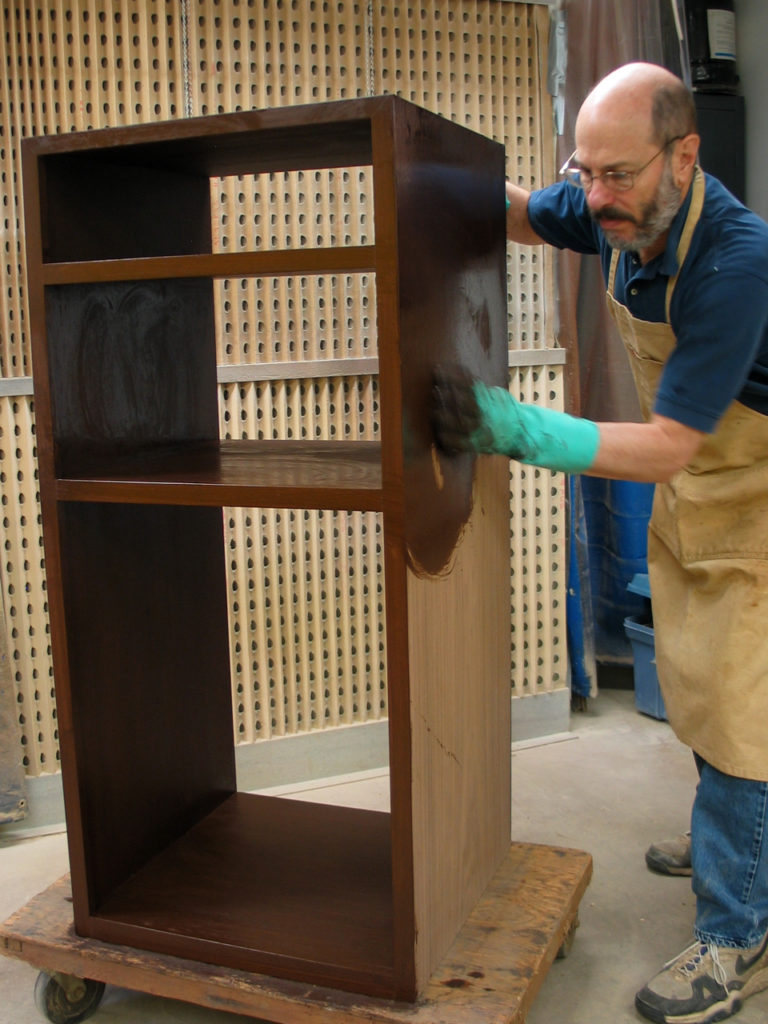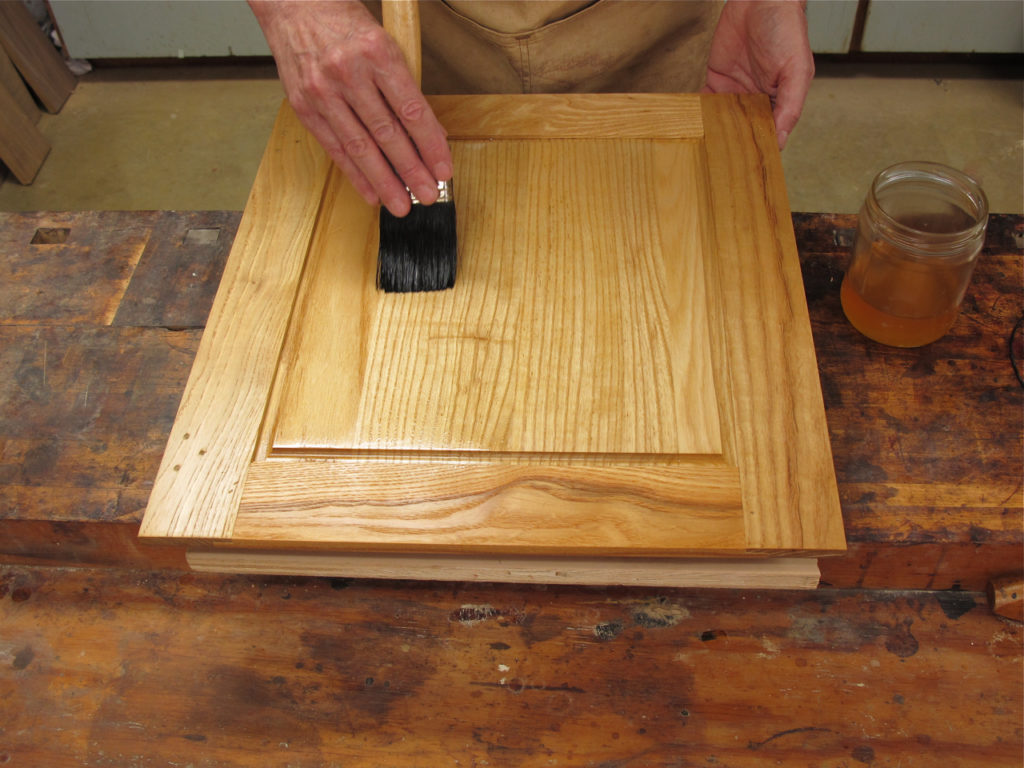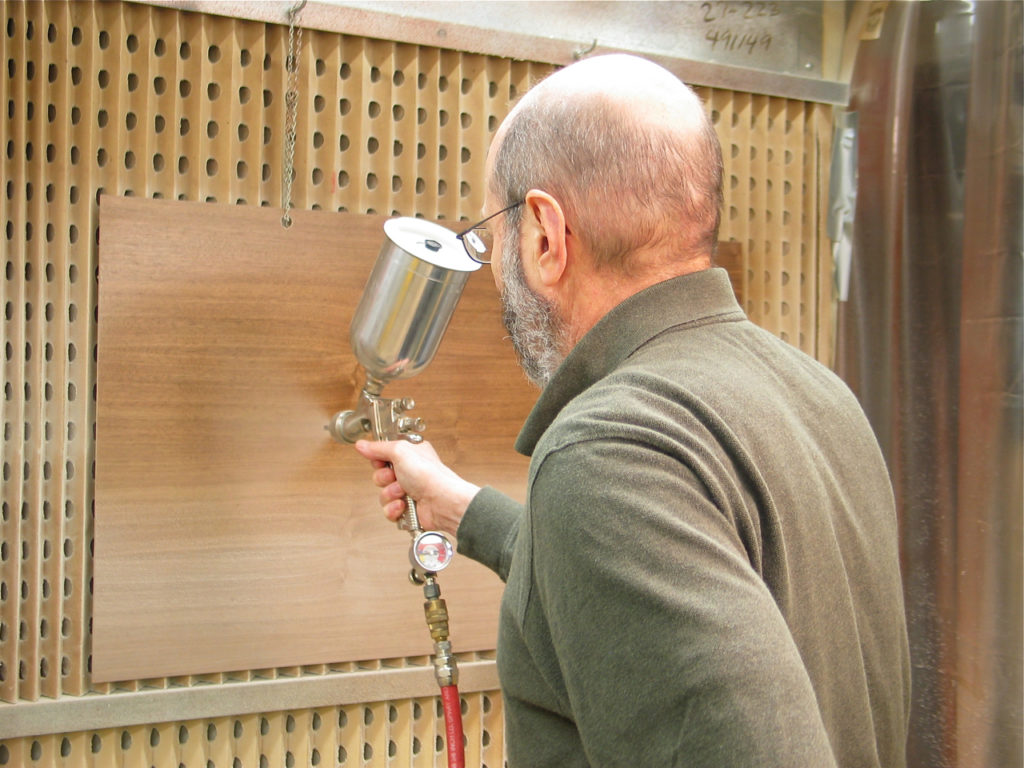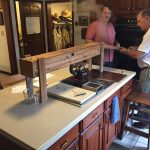We may receive a commission when you use our affiliate links. However, this does not impact our recommendations.

Wiping stain is fast and minimally wasteful.
Here’s a question that comes up often. What is the best way to apply a stain or finish? To begin with, all stains and finishes can be applied with one of three finishing tools: rag, brush (including paint pad, roller, etc.) or spray gun. Each is easy to use. Even a spray gun is no more difficult to use than a router.
There are at least five key differences among these finishing tools: cost, speed, waste, film leveling and the impact of weather, especially on spraying.
Rags cost little or nothing – little if you buy them or substitute paper towels, nothing if you use old, worn clothing. Throwaway brushes cost very little, while better brushes cost around twenty dollars or a little more. Spray guns can cost several hundred dollars or more, and you may have to add in an air source, compressor or turbine, if you don’t already have one. So if cost is a factor, you may be limited to rags or brushes.
Rags and spray guns are fast. Brushing a stain or finish is slow. A brush is the most inefficient application tool. So if speed of application is important to you, you should choose a rag or spray gun for applying wipe-on/wipe-off stains and finishes and a spray gun for applying a film-building finish, one that dries hard.

Brushing is slow but the least wasteful.
Brushes waste the least amount of stain or finish. Only the amount that remains in the brush after you are done is wasted. Rags waste the amount of stain or finish that remains in the rag when you are done. Spray guns waste all the stain or finish that bounces back off the object or misses the object. So spray guns are the most wasteful of the three tools.

Spraying is fast but wasteful.
Rags leave a level surface only if you wipe off the excess. Brushes leave a level surface only if you thin the finish enough so it levels. All brushes leave brush marks if the finish is too viscous. By increasing the air pressure to improve atomization, spray guns can be made to leave the thickest level film, but spray guns will still leave orange peel if the finish is too viscous. Just as with brushmarks, you can also eliminate orange peel by thinning the finish.
Weather becomes a factor for spraying because in order to exhaust the overspray (the spray that bounces off or misses the surface being sprayed) you need not only an exhaust fan but replacement air, or the fan won’t be effective. When it’s cold outside, the replacement air (from an open window or door) will be cold and, unless the object you’re spraying is small, your shop may get too cold. Dedicated heated-air-replacement units are expensive.
So there is no best tool for applying stains and finishes. There are pros and cons to each.
– Bob Flexner
Here are some supplies and tools we find essential in our everyday work around the shop. We may receive a commission from sales referred by our links; however, we have carefully selected these products for their usefulness and quality.










I do all three, but where spraying really shines is in complex objects like chairs where there are a lot of intersections and often details such as turnings, carvings,.and tight spots. I can spray finish a chair in a couple minutes or less and last time I brushed finish on a chair I think it took me over an hour.
Any plans to release a spanish version of, “Understanding Wood Finishing”. So many people painting and finishing woodwork now are from Mexico and Latin America. A spanish language version would be a huge success.